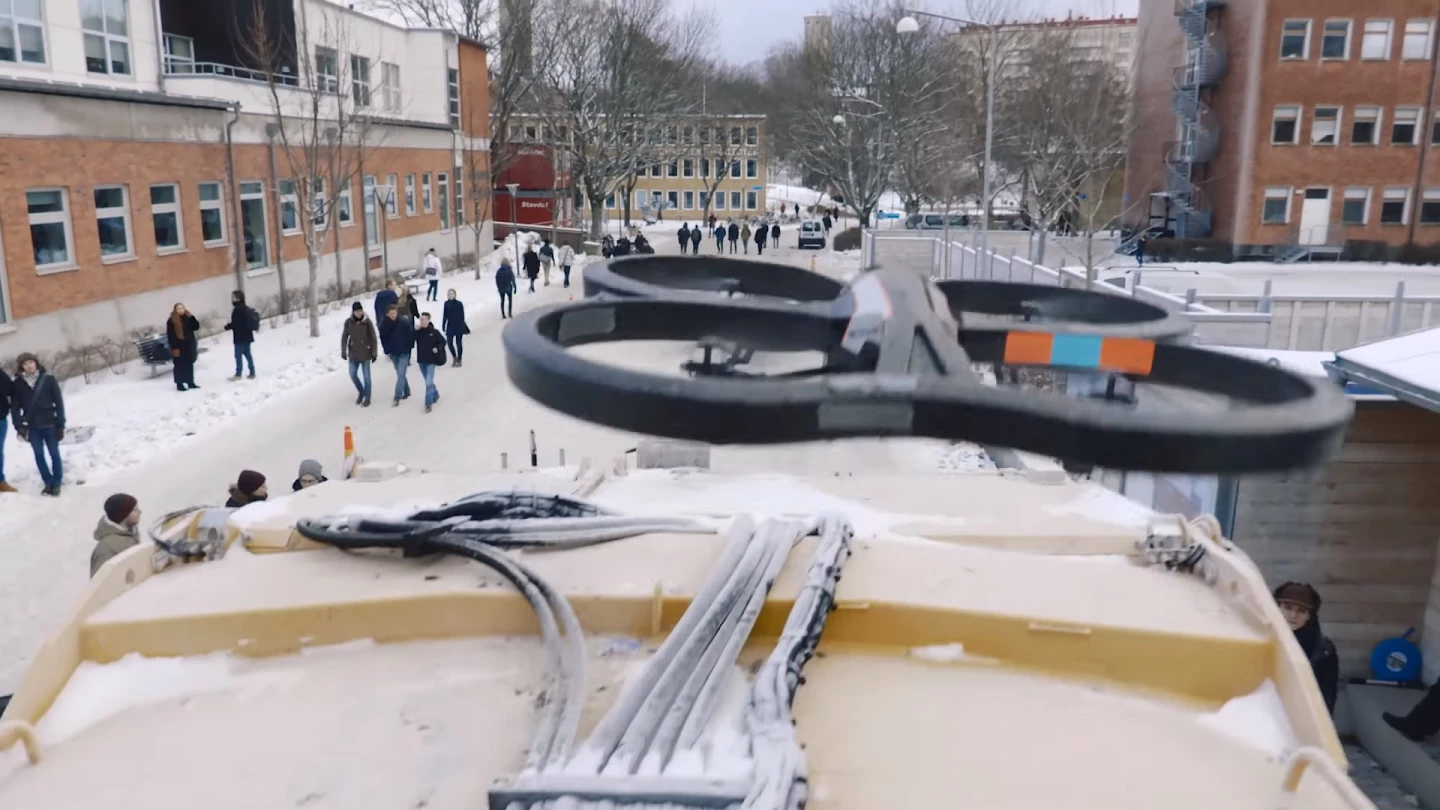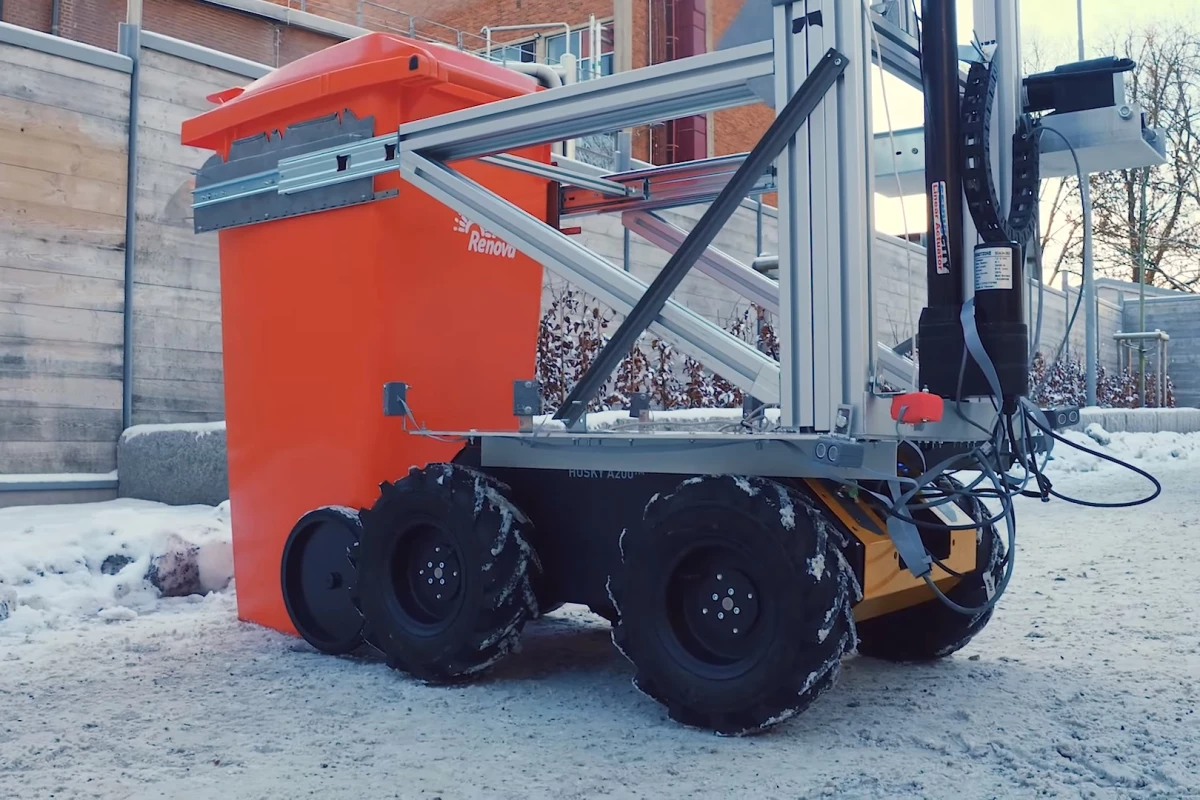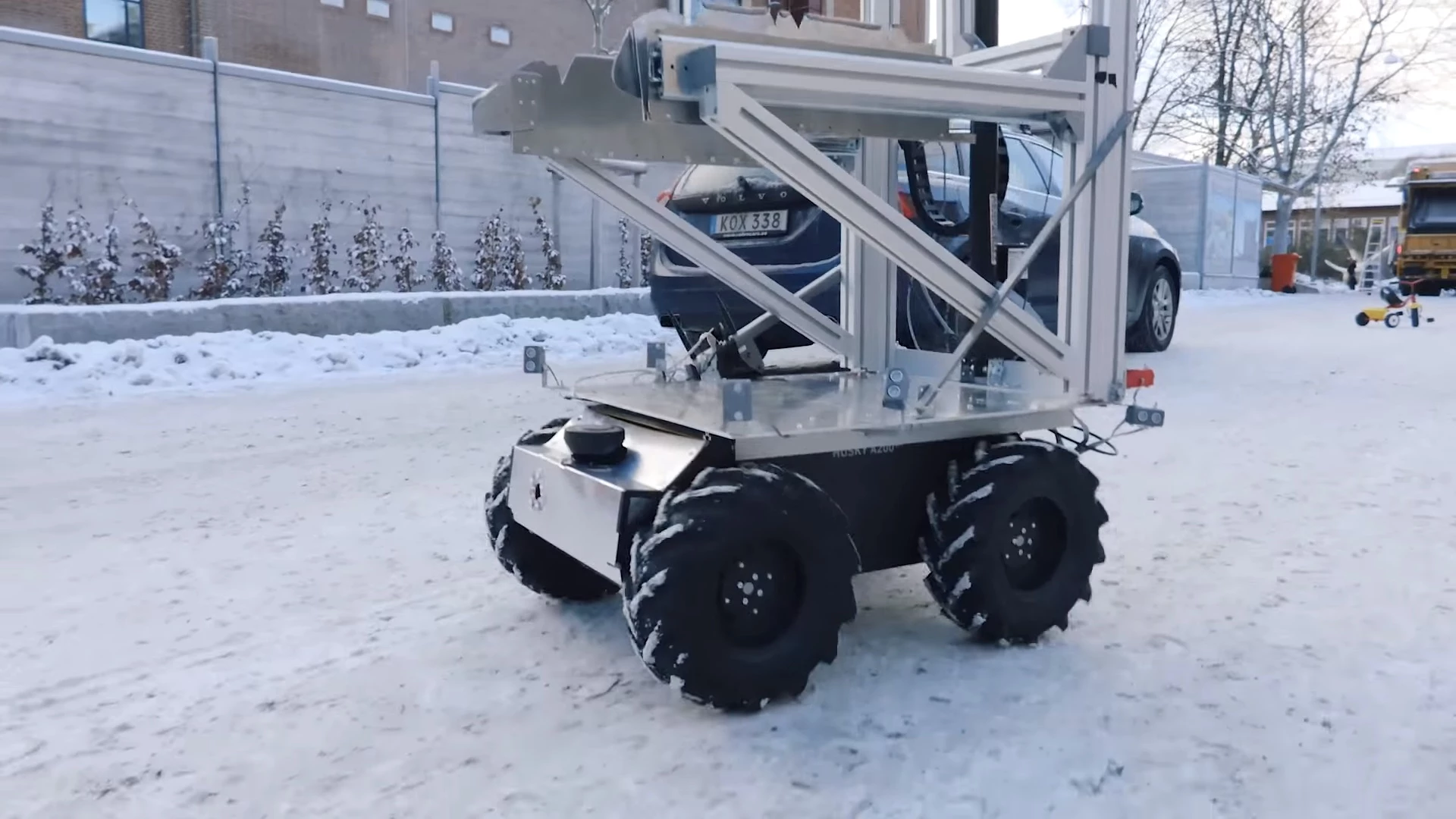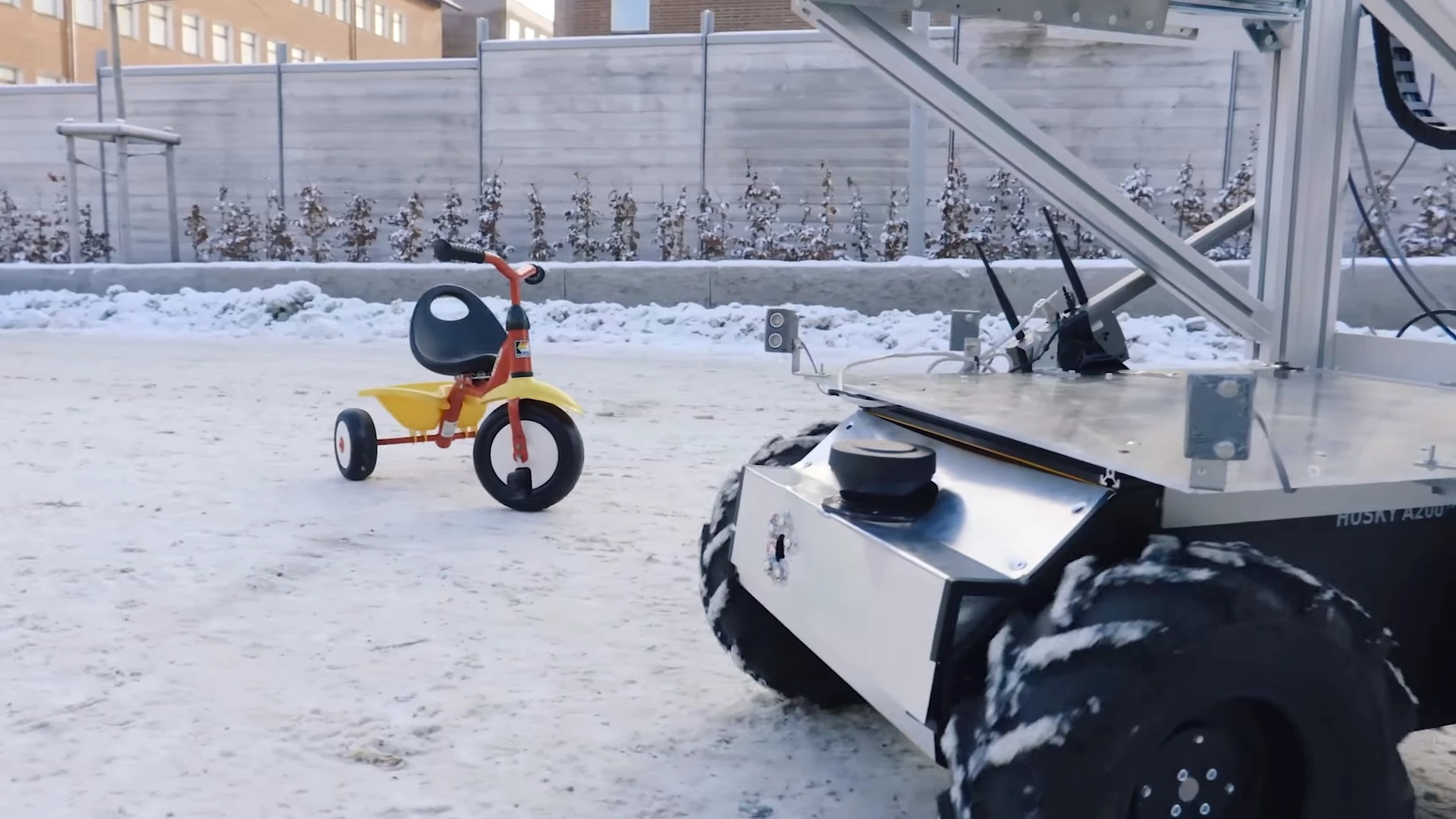In both an impressive display of innovative technology and a glimpse of a future in which humans could be redundant, Volvo has shown off its Robot-based Autonomous Refuse handling (ROAR) project. The system uses drones to locate refuse bins and robots to collect and empty them.
For the project, Volvo has collaborated with Chalmers University of Technology, Mälardalen University and Penn State University, all of which are part of its Academic Partner Program. Waste management firm Renova is also involved. The aim is to show how machines can communicate with each other and how, in the future, they will be able "to facilitate everyday life in a large number of areas."
"We predict a future with more automation," says project manager for robot development at the Volvo Group Per-Lage Götvall in a press release. "This project is intended to stimulate our imagination, to test new concepts that may shape transport solutions of the future."
The robot, called ROARY, is transported to the refuse collection site on the back of a refuse truck. An operator presses a button on the truck and this prompts a drone to be launched from its roof and begin scanning the surrounding area to locate bins. The locations of the bins are then relayed to the ground-based robot.

ROARY navigates its way to each bin using a map of the area and the likely locations of bins, as well as the data provided by the drone. GPS and LiDAR are used to help it navigate and avoid obstacles. Inertial measurement unit (IMU) data, from accelerometer and gyroscope sensors, are used to help the robot keep track of its position.
Once ROARY has arrived at the bin, it uses cameras and LiDAR to position itself, before extending its arms and lifting the bin onto its built-in platform. It then returns to the refuse truck and lifts the bin into position to be emptied.
There is an automated emergency stop function built into ROARY in the event that it detects an obstacle and a camera on top of the truck to detect if something gets too close to the truck while a bin is being lifted and emptied. An emergency stop button can also be used to manually halt any activity and the operator is able to monitor the location of the robot from the cab of the truck.
It took the team just four months to design and build the prototype robot and the first test was actually carried out ahead of schedule, having originally been planned for June this year. The video below provides an insight into the project and shows the test being carried out.
Source: Volvo







